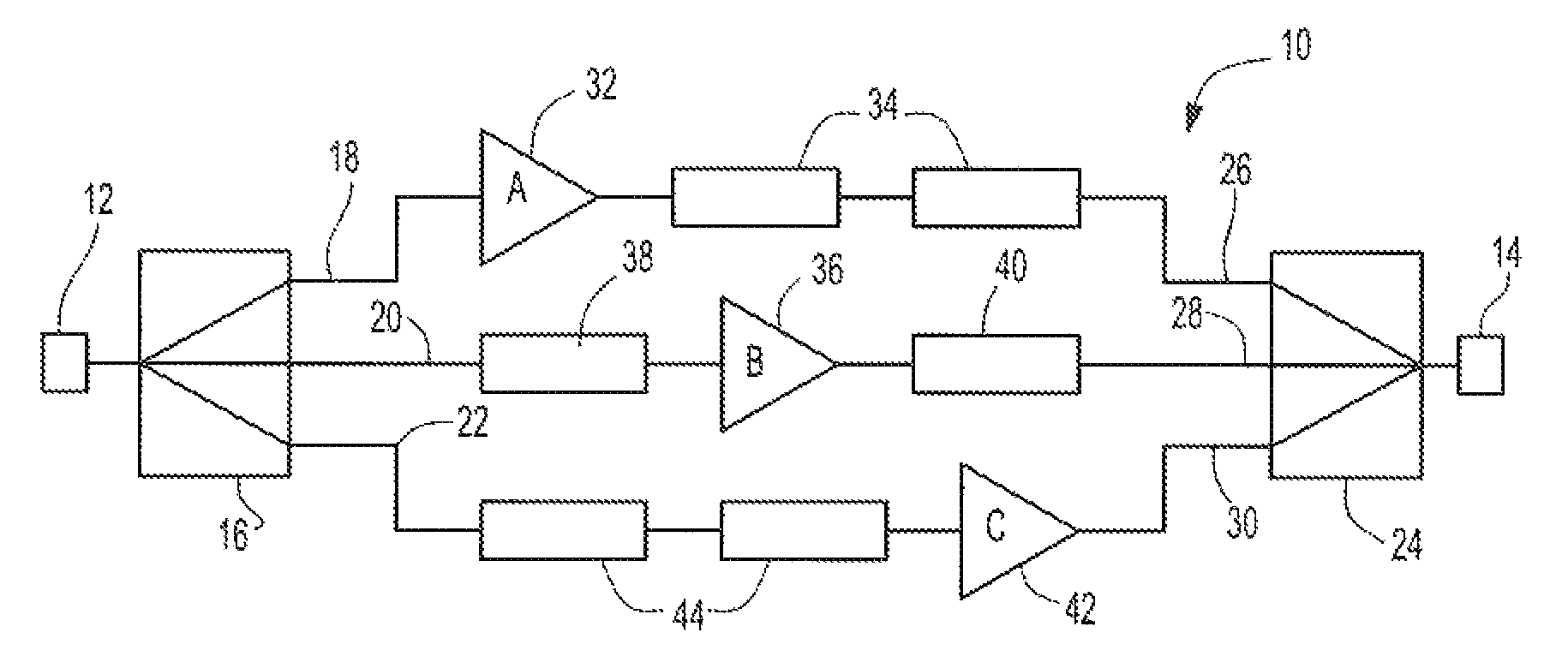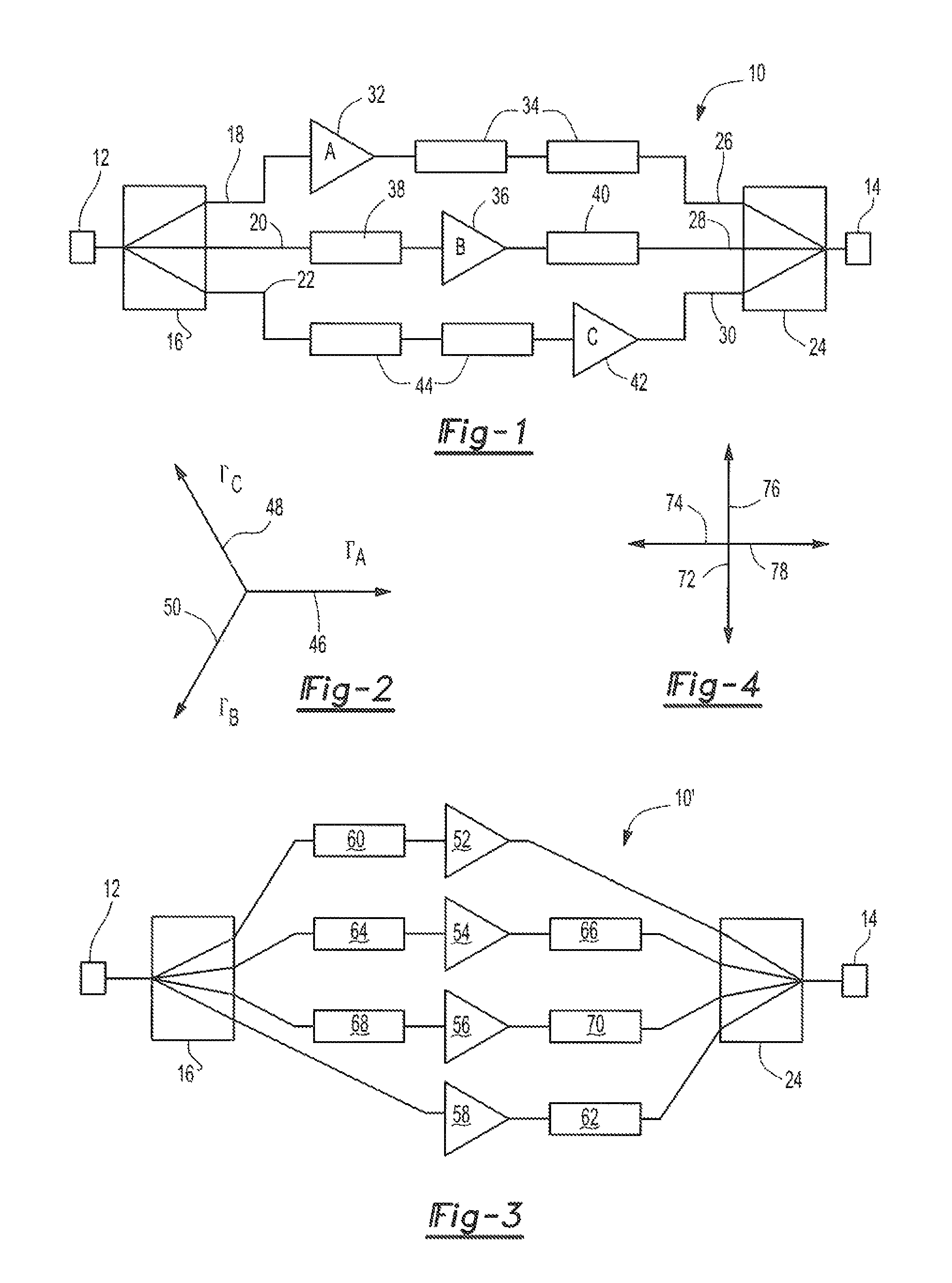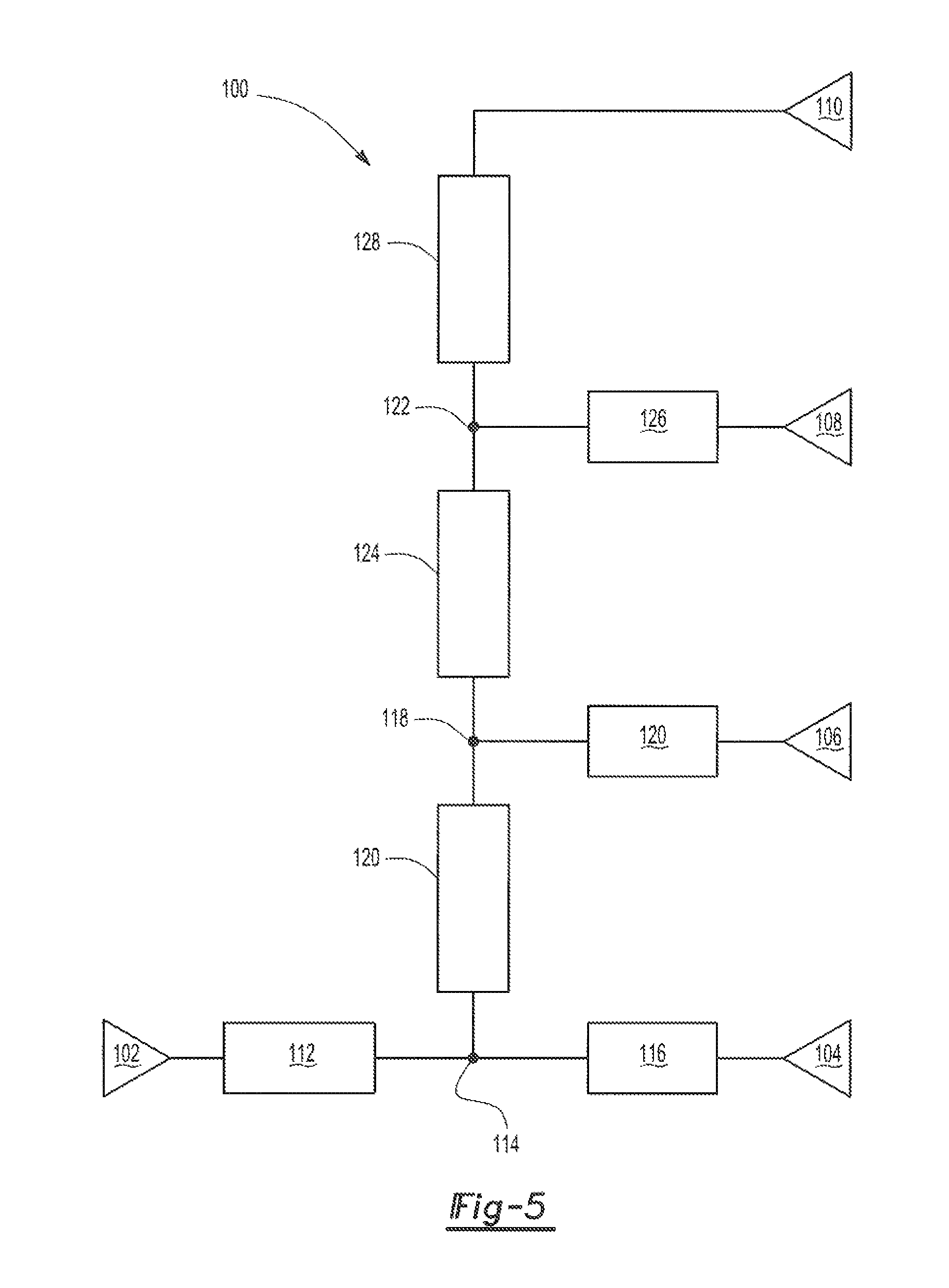Power dividing and power combining circuits
a power combining circuit and power division technology, applied in the field of electronic circuits, can solve the problems of reducing the overall power input of the power amplifier, and not adding constructive signals from the amplifier, so as to achieve zero or at least low signal loss, eliminate or minimize the effect of signal loss
- Summary
- Abstract
- Description
- Claims
- Application Information
AI Technical Summary
Benefits of technology
Problems solved by technology
Method used
Image
Examples
Embodiment Construction
[0030]In general, the power-dividing and / or power-combining circuits described herein have inputs, outputs, at least three electrical pathways, and at least three electronic devices between the inputs and the outputs. At least one electronic device may be provided in each of the electrical pathways. Depending on the configuration of the inputs, outputs, the pathways and the electronic devices may be connected in parallel between the inputs and outputs. The electronic devices have substantially equal signal reflection at the inputs and / or the outputs. For example, the electronic devices may have input reflection coefficients and substantially equal output reflection coefficients. While the embodiments illustrated in the figures generally show a power amplifier as an electronic device, it should be appreciated that the circuits may include other electronic devices as well. For instance, the electronic devices may include amplifiers, switches, attenuators, mixers, antenna elements (e.g...
PUM
 Login to View More
Login to View More Abstract
Description
Claims
Application Information
 Login to View More
Login to View More - R&D
- Intellectual Property
- Life Sciences
- Materials
- Tech Scout
- Unparalleled Data Quality
- Higher Quality Content
- 60% Fewer Hallucinations
Browse by: Latest US Patents, China's latest patents, Technical Efficacy Thesaurus, Application Domain, Technology Topic, Popular Technical Reports.
© 2025 PatSnap. All rights reserved.Legal|Privacy policy|Modern Slavery Act Transparency Statement|Sitemap|About US| Contact US: help@patsnap.com



